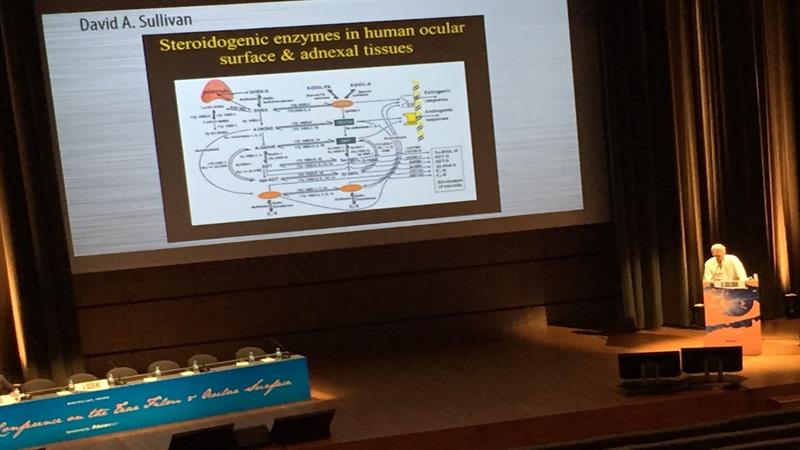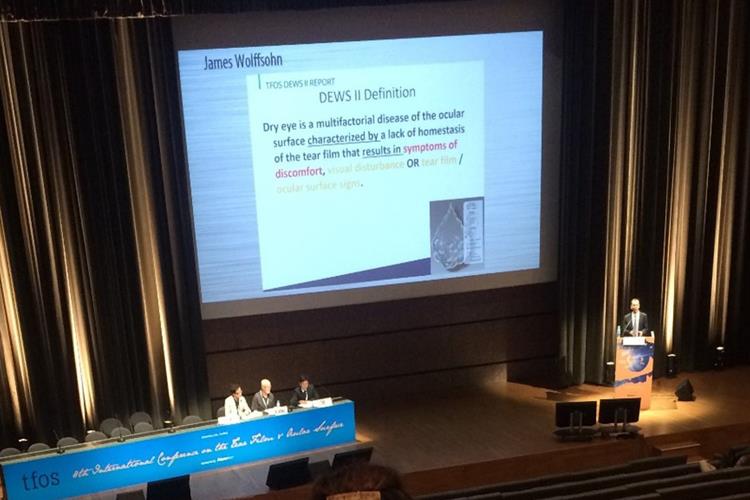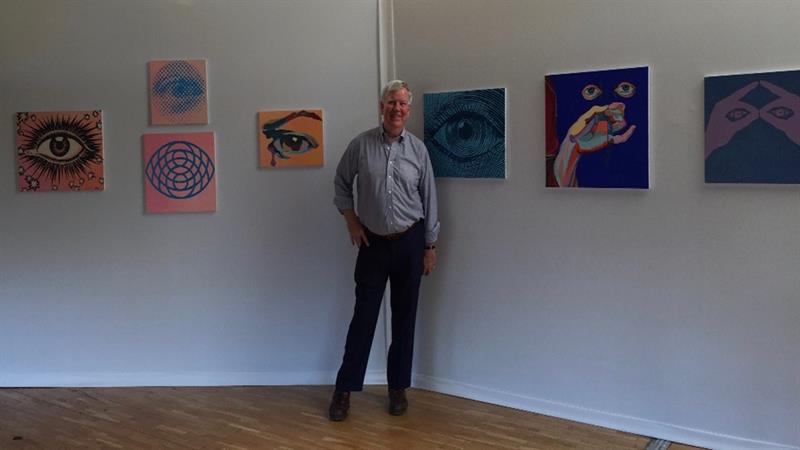The 8th International Conference on the Tear Film and Ocular Surface (TFOS) Congress, took place recently in Montpellier, France. The conference aims to summarise current knowledge of research on the structure and function of tear film-producing tissues, tears and the ocular surface. This year more than 600 delegates from 41 different countries attended the conference making the TFOS Congress 2016 one of the best attended meetings in this field. The programme consisted of a combination of basic science and applied research, with clinical pearls focusing on the ocular surface and dry eye disease (DED).
Education
Professor Mark Wilcox (Australia) welcomed delegates, and emphasised the importance of continuing education in the field of ocular surface disorders. The meeting was full of inspiring discussions, interesting talks including the microbiology of the ocular surface and innovative technologies for the diagnosis and treatment of tear film and ocular surface disorders.
The conference started with a session entitled ‘All eyes on sex’, which focused on the impact of gender on the eye. Dr Janine Clayton, from the Office of Research on Women’s Health (National Institutes of Health, USA), presented a guiding principle for ophthalmology based on gender differences. She described differences in systemic disease between men and women, and proposed strategies for gender specific treatments. Dr Clayton concluded her presentation by emphasising the significance of separate analyses for males and females in research studies. She showed examples that indicated if data from males and females are not analysed separately, serious misinterpretation of the data can result.
Dr John Cidlowski (North Carolina) spoke about the treatment of inflammation with glucocorticoids. These molecules are widely used in ophthalmology (3% of the UK population is treated with glucocorticoids at some stage) to regulate the metabolism and cell cycle. The molecular mechanism of glucocorticoids in the eye is not well understood yet. However, it is known that the receptors differ between males and females and so can their effects.
Conference director and TFOS founder Dr David A Sullivan gave a presentation about dry eye disease treated with sex steroids and he and his co-workers found that reduction of androgens may induce meibomian gland dysfunction (MGD) and evaporative dry eye (figure 1).

Figure 1: Dr David A Sullivan during his presentation about the role of steroids in ocular surface homeostasis
There were interesting debates about general questions regarding dry eye and different interpretations. A debate about the biggest risk factor for dry eye disease, whether contact lens discomfort or MGD, was led by Dr Kelly Nichols (Alabama), supporting the argument for MGD and Dr Jason Nichols (also Alabama) supporting the argument for contact lens discomfort. They concluded that contact lens discomfort may be a factor in MGD, and that MGD might be a higher risk for dry eye.
A debate about whether or not there are good animal models for dry eye disease was also thought provoking. Dr Seunghee Cha (Florida) gave a presentation supporting the case that there are good, although not perfect, animal models for studying human dry eye. On the other hand, Professor Austin Mircheff (Southern California) gave a presentation about why animal models are not good enough to study dry eye. At the end of the discussion session, they agreed there is a need for animal models in order to understand more about the disease.
Hot topics
One of the hot topics of the congress was inflammation. A session on ‘Surface barrier to inflammation’ provided updates on studies of new biomarkers from various ocular tissues involved in the inflammatory process. There is scope to use such markers for both diagnosis and also in the treatment of dry eye. Molecular studies have used both in vitro and in vivo models for evaluating these markers, and this was a recurring theme throughout the conference, addressed both in the posters and also in the oral presentations.
The topic of stem cell therapy also featured. Limbal stem cells, mesenchymal stem cells, human induced pluripotent stem cells, bioengineered corneal stroma are examples of approaches that have been used in the study of the repair and regeneration of the ocular surface tissues. Different agents, such as growth factors and sex steroids, have also been investigated.
Global view
As the TFOS Congress provides a forum to improve the understanding of DED and its impact, there were useful sessions on the challenges and unmet needs for the treatment of ocular surface disease in various regions of the world. The problems with the treatment of ocular disease in different regions around the globe were discussed. Unique challenges for India, Africa, Latin America, USA, Europe and Oceania (a region covering 14 countries including Australia, New Zealand and New Guinea in the Pacific) were discussed. All of them have different unmet needs, but economic barriers are the most common challenges in many countries.
During the last session, members of the TFOS Dry Eye Workshop, TFOS DEWS II (consisting of 153 members from 23 countries with 12 different subcommittees), presented a summary of a forthcoming update on the original Dry Eye Workshop (DEWS) Report, which will be finalised around November 2016. The publication will be available in The Ocular Surface Journal in spring 2017. The scope of the report will include updates on definition and classification, sex, hormones and gender, epidemiology, pathophysiology, clinical trials, tear film, iatrogenic dry eye, pain and sensation, diagnosis, management and therapy as well as public awareness and education. Professor Fiona Stapleton (Australia) of the epidemiology subcommittee, pointed out the lack of studies in younger age groups. She suggested that an international collaboration could fill gaps in our knowledge of epidemiology of DED. Professor James Wolffsohn (Aston) gave an update in the diagnosis of dry eye (figure 2).

Figure 2: Professor James Wolffsohn during his lecture about diagnosis in dry eye
Beyond the lab
At the exhibition area more than 20 exhibitors showed the latest technologies for diagnosis and treatment of the principal ocular surface disorders.
There was also an art installation in the exhibition area where attendees got the opportunity to visit a collection entitled ‘Eye Contact’ (figure 3) by the American artist C Finley, who is also a curator and urban interventionist in Rome and New York. Finley was inspired by TFOS and painted the eye collection just for the conference. A portion of the proceeds from the sale of each canvas will be donated to TFOS (iamfinley.com/finleyshop).

Figure 3: Dr David A Sullivan in C Finley’s ‘Eye Contact’ art exhibition
During the congress, the inaugural TFOS i2 innovation showcase session was a welcome addition, where different start-ups presented their products and ideas. These companies, originating from France, Spain, the US, Netherlands, Israel and Canada, were selected from applicants from around the world. Each start-up gave a four-minute presentation, followed by three minutes of questions. TearSolutions, a US-based start-up, was awarded the best pitch and received a collector’s edition eye painting from Finley, a world-renowned artist, for his award.
The organisers of this year’s congress certainly achieved their stated goal to ‘promote an international exchange of information that will be of value to basic scientists involved in eye research, to clinicians in the eye care community and to pharmaceutical and diagnostic companies with an interest in tear film or ocular surface disorders’.
Alberto Recchioni and Tugce Ipek are postgraduate students of Optegra Eye Sciences and Aston University and are part of the European Dry Eye Network (EDEN) project funded by EU Horizon 2020 research and innovation programme under Marie Sklodowka-Curie grant agreement No 642760
Further details of TFOS at tearfilm.org



